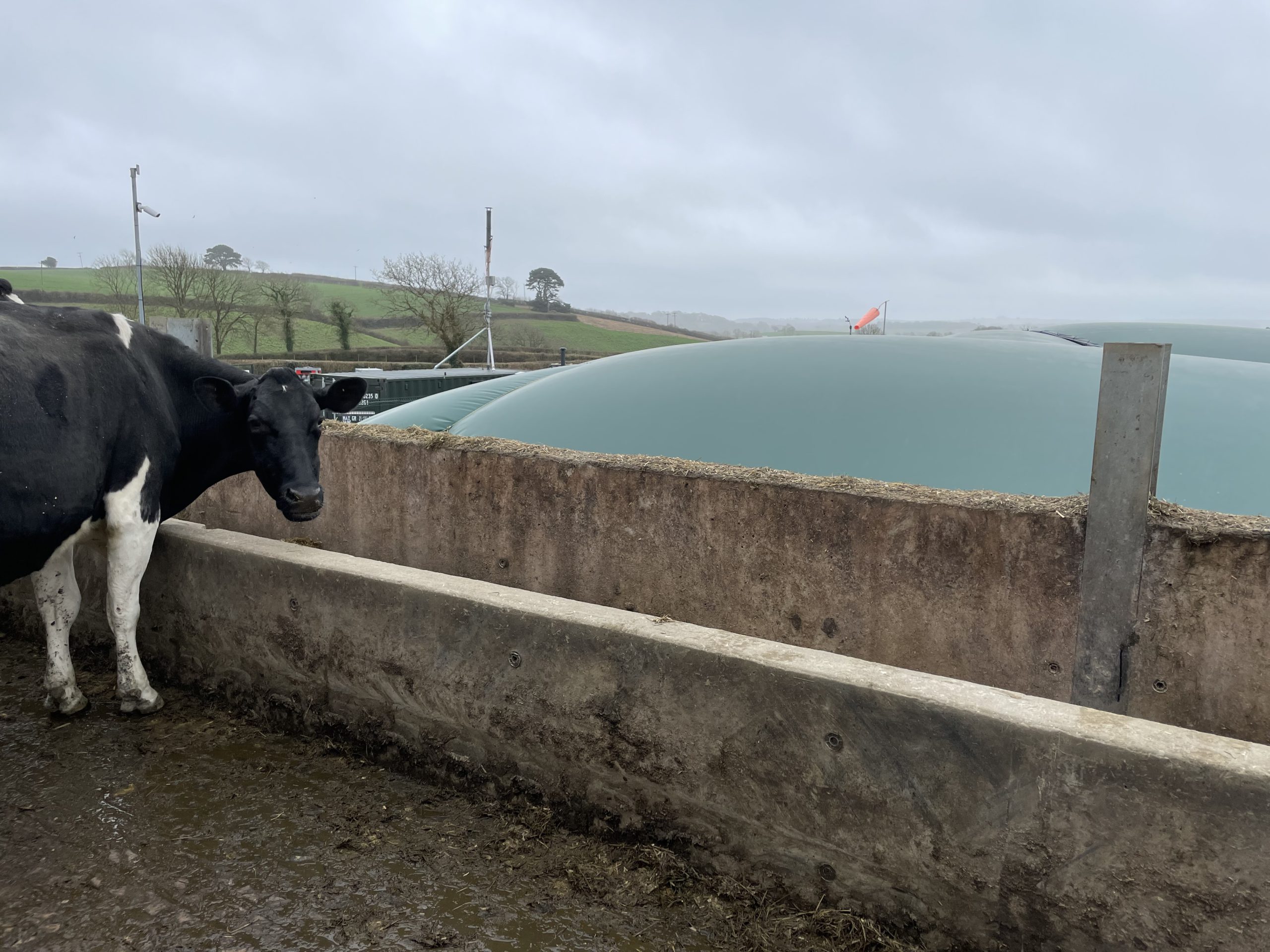
A Farm Net Zero (FNZ) event held in March 2023, Trenance.
Methane emissions from livestock make up a large part of a farm’s carbon footprint, capturing and processing these emissions can help to reduce the carbon footprint. Farm Net Zero Monitor Farmers, Katie and Kevin Hoare, milk 120 cows on a 130-acre Cornwall Council holding which required investment to improve slurry storage. They have worked with Cornish company Bennamann as part of a pilot with Cornwall Council to install a covered slurry lagoon that captures and processes methane gas for use as a fuel. A group of farmers met to learn more about the system, with talks from Dr. Chris Mann, co-founder of Bennamann, and George Mills, Area Sales Manager at New Holland who supply methane-powered tractors. This event was made possible with thanks to the National Lottery Community Fund who fund the Farm Net Zero project.
Chris Mann explained how the Bennamann system works, and how it can allow slurry pits to become mini power stations. Slurry is scraped into a reception pit where it is macerated to enhance breakdown and then into a well-insulated lagoon where microbial activity produces methane and other gases, as it does in an uncovered pit. The gases are collected by the cover, processed in a shipping container-sized plant unit with the cleaned methane pumped into another reception chamber sitting above the slurry pit. This processed methane can then be bottled and used as fuel in New Holland’s methane-powered tractor, or in a Bennamann methane-powered generator to provide electricity either for on-farm use or sold to the grid.
George Mills showed the group around New Holland’s methane-powered tractor. Currently, this is able to do four hours of work on a single tank, with a range-extending fuel tank/front weight increasing this to twelve hours. Although slightly more expensive than a diesel tractor, the ability to run on home-produced gas can mean it is cheaper to run in the long-term by avoiding fluctuating fuel prices. Plus, the reduction in diesel use can have major benefits to reducing the farm’s carbon footprint.

Kevin and Katie say the covered and processed slurry is a better product to use as it is almost like digestate, allowing them to apply it with a trailing shoe between grazings and reduce the amount of artificial fertiliser they require. They are now able to meet all the grassland’s P and K needs from slurry, which has clear financial benefits and also helps their carbon footprint by reducing demand for carbon-intensive artificial fertiliser. A grass yield trial is in development to quantify the benefits of the new slurry.
The ultimate aim for Trenance is to go off-grid, with the methane capture system providing all the fuel for machinery and electricity. Katie and Kevin are keen advocates for agriculture’s role in providing climate change solutions and feel it is important for farmers to tell their story to the public to demonstrate their commitment to the environment. Using the Farm Carbon Calculator for Trenance through the Farm Net Zero project shows that the new slurry store is capturing around 600 tonnes of CO₂e from methane, putting the overall carbon footprint at 0.13 kg of CO₂e per kg Fat- and Protein-Corrected Milk (FPCM).
Key takeaways:
- Methane capture from slurry reduces the farm’s carbon footprint by preventing methane entering the atmosphere
- Using processed methane as fuel also reduces emissions from red diesel and electricity use
- The methane capture system has financial benefits through reductions in fuel/electricity purchases, the option to sell gas and the ability to use slurry more effectively and replace bought-in fertiliser.


